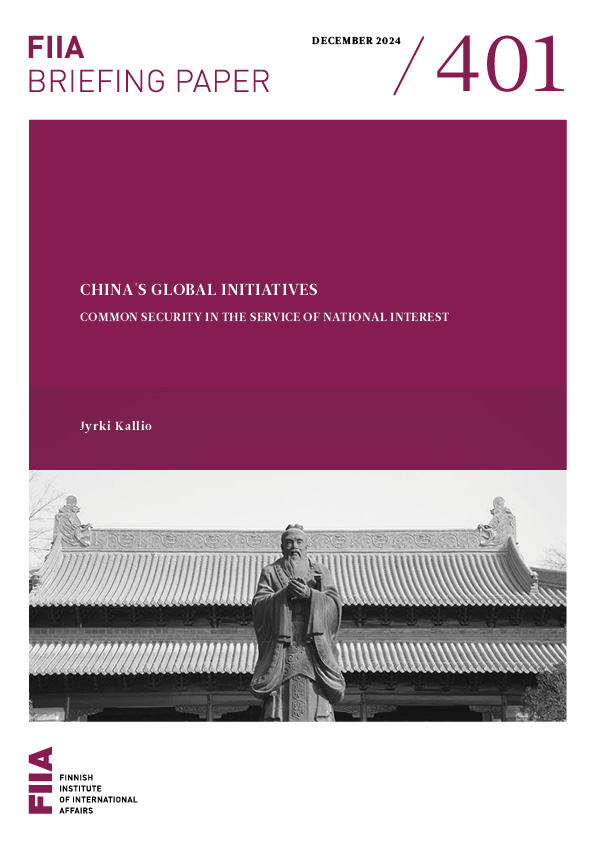The heightened tensions between the United States and Iran should be understood in the context of the Trump administration’s broader foreign policy approach. Even if neither side wants a military confrontation, the “maximum pressure” campaign by the US has raised the risk of a potential miscalculation.
During the past months, the decades-long standoff between the United States and Iran has become increasingly precarious. In early May, the Trump administration cited intelligence findings of a heightened threat by Iran and its proxies against American troops and regional allies. In response, the US has sent an aircraft carrier, B-52 bombers and Patriot missiles to the Middle East. President Trump has also announced an additional deployment of 1,500 troops to the region in a “mostly protective” capacity.
Meanwhile, Iran has urged the remaining parties to the Iran nuclear deal (Joint Comprehensive Plan of Action, JCPOA) to combat the crippling effects of US-imposed sanctions. On 8 May, the anniversary of President Trump’s withdrawal from the agreement, President Hassan Rouhani proclaimed that Iran would cease compliance with two provisions that place limits on uranium and heavy water stockpiles. He also threatened that Iran would begin enriching uranium beyond the limits set by the JCPOA unless the remaining parties to the agreement found a way to ease the sanctions burden.
While Iran’s contribution to the spiral of heightened hostility should not be underestimated, the methods chosen by the Trump administration to deal with Tehran’s nuclear programme and influence in the Middle East have certainly contributed to the current impasse. In fact, US-Iran tensions are symptomatic of a broader “Trumpian” approach to the global arena.
The Trump administration has made it explicit that it views the world in terms of sovereign states locked in a world of competition. In such a world, the US will need to harness all means of national power to confront not only great power challengers, but also “rogue regimes” like Iran and North Korea – although the US approach has so far diverged in these two cases. In effect, the US National Security Strategy (NSS) from December 2017 both criticised the “flawed [Iran] nuclear deal” and dubbed Tehran the “world’s leading state sponsor of terrorism” with destabilising regional ambitions.
In line with this worldview, the JCPOA is yet another prominent example from a list of multilateral agreements that the Trump administration has deemed contrary to US interests. In an obvious parallel to the US exit from the Paris Agreement on climate change a year earlier, Trump took his decision on the JCPOA despite months of efforts by European allies to convince him otherwise. Although the ensuing “maximum pressure” approach towards Iran might enjoy the support of America’s regional allies like Israel and Saudi Arabia, there is now a fundamental rift between the US and Europe – not to mention Russia and China – over how to move forward.
The administration’s pledge to utilise all instruments of national power has manifested itself in a heightened use of economic coercion. This has taken the form of both sanctions and tariffs, and is a reflection of how the US leadership believes power should be exercised in the international arena. It is hardly surprising, then, that the Trump administration has not only reimposed previously lifted Iran sanctions, but has also enacted new more stringent ones. Most recently, starting on 2 May 2019, the US ended waivers that allowed certain states, including India, China and Japan, to continue importing Iranian oil, cutting off a key source of revenue for Tehran in the process. On 8 May, the US announced further measures targeting Iranian metal industries. Moreover, in an unprecedented symbolic move, the US has also added Iran’s Islamic Revolutionary Guard Corps (IRGC) to its list of foreign terrorist organisations.
These measures have been accompanied by a mixture of combative and conciliatory rhetoric – another mainstay of Trump’s foreign policy. President Trump has taken to Twitter and threatened “the official end of Iran”, while National Security Adviser John Bolton and Secretary of State Mike Pompeo – both prominent “Iran hawks” – have maintained that any attack on the US by Iran or its regional proxies would be met with a forceful response.
During the past two weeks, however, the president and other officials have indicated that the administration is willing to talk with Tehran. Pompeo even remarked that the US would be willing to do so “with no preconditions”, despite the fact that he has previously laid out a maximalist 12-point list of “basic requirements” that Iran should meet. Such rhetorical drum beating followed by de-escalation is hardly a novel ploy for Trump and his team. In the case of North Korea – another adversary with nuclear ambitions – the president has followed up raucous rhetoric with soft-spoken adulation.
Ultimately, the Trump administration’s “maximum pressure” approach to Iran is hampered by similar challenges that apply to the administration’s international engagement more broadly – only in this case, the stakes are extremely high. One issue is that Trump’s unilateral methods are unpopular with the other stakeholders in the Iran deal. This means that support from European allies would be in short supply should the tensions spiral into a military confrontation. In addition, it is still unclear what the envisaged endgame of the Trump administration is. Would it settle for an improved agreement on Iran’s nuclear programme? If not, what other issues should be covered by a new deal?
The most recent developments indicate that President Trump is unwilling to commit large numbers of US troops to the region, much less be bogged down in a new Middle East quagmire. Yet, given the tense situation, misperception and miscalculation on either side could have dire consequences.









